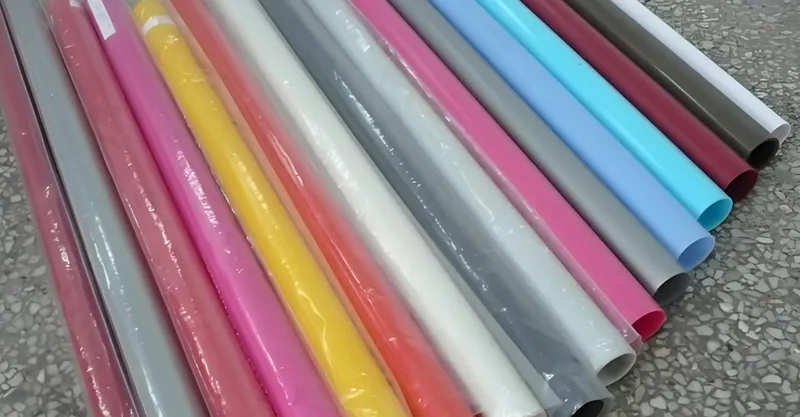Finite Element Analysis (FEA)1 is a powerful computational tool that revolutionizes extrusion design by simulating material behavior, optimizing processes, and predicting potential issues before manufacturing begins. Extrusion, the process of shaping materials like metals, plastics, or ceramics by forcing them through a die, benefits immensely from FEA’s ability to enhance efficiency, reduce costs, and improve product quality. This blog post delves into how FEA transforms extrusion design, offering insights for beginners and seasoned engineers alike.
FEA enhances extrusion design2 by simulating material flow, optimizing die geometry, and predicting defects, leading to cost savings and superior products across industries like automotive and aerospace.
Whether you’re new to extrusion or seeking to refine your engineering approach, understanding FEA’s role can unlock significant design improvements. Let’s explore its benefits, applications, and practical implementation.
FEA reduces the need for physical prototypes in extrusion design.True
By simulating the extrusion process virtually, FEA identifies and resolves issues, minimizing the reliance on costly physical trials.
FEA is only useful for simple extrusion designs.False
FEA excels in modeling complex geometries and material behaviors, making it ideal for intricate designs in precision-driven industries.
- 1. What is Finite Element Analysis in Extrusion Design?
- 2. How Does FEA Optimize Extrusion Processes?
- 3. What are the Applications of FEA in Extrusion Design?
- 4. What are the Technical Aspects of Using FEA in Extrusion Design?
- 5. What are the Practical Tools for Implementing FEA in Extrusion Design?
- 6. Conclusion
What is Finite Element Analysis in Extrusion Design?
Finite Element Analysis (FEA) is a numerical technique that breaks down complex engineering problems into smaller, solvable elements, enabling detailed simulations of physical processes. In extrusion design, FEA predicts how materials respond to forces like pressure, temperature, and flow, helping engineers refine designs before production.

FEA in extrusion design simulates material behavior, optimizes die shapes, and prevents defects, enhancing efficiency and reducing manufacturing risks.
| Feature | FEA in Extrusion Design | Traditional Methods |
|---|---|---|
| Simulation | Predicts material flow, stress, and defects | Relies on physical trials and error |
| Cost Efficiency | Reduces prototype needs, saving materials | Higher costs from repeated physical testing |
| Time Savings | Enables rapid virtual iterations | Slower due to physical production cycles |
| Complexity | Handles intricate designs and materials | Limited by physical testing constraints |
Understanding FEA
FEA divides a continuous system into finite elements, solving for variables like stress or temperature across each element. In extrusion, it models material flow3 through a die, revealing potential issues such as cracking or uneven flow. Learn more about Finite Element Analysis basics.
Understanding Extrusion
Extrusion shapes materials by pushing them through a die, creating continuous profiles like pipes, rods, or frames. Used in industries from construction to aerospace, it relies on precise control of material properties and process conditions. Explore Extrusion fundamentals.

Types of Extrusion Processes
-
By Temperature: Hot (above recrystallization) vs. Cold (room temperature).
-
By Direction: Direct (material flows with the ram) vs. Indirect (opposite to ram).
-
By Material: Metals (e.g., aluminum), plastics (e.g., PVC), or ceramics.
FEA adapts to these variations, simulating conditions to optimize outcomes.
FEA can simulate both hot and cold extrusion processes.True
FEA adjusts for temperature effects, making it versatile for diverse extrusion types.
FEA is limited to metal extrusion.False
FEA applies to plastics, ceramics, and metals by using appropriate material models.
How Does FEA Optimize Extrusion Processes?
FEA optimizes extrusion by providing a virtual testing ground, allowing engineers to refine designs, predict defects, and save resources.

FEA improves extrusion by simulating material flow, identifying defects, and optimizing die designs, reducing costs and enhancing quality.
Simulating Material Behavior
FEA models how materials deform under extrusion conditions, analyzing stress, strain, and flow patterns. This ensures the material can endure the process without failure.
Predicting Defects
FEA identifies potential issues like:
-
Cracking: From excessive stress.
-
Warping: Due to uneven cooling.
-
Surface Flaws: From poor die design.
Early detection allows for design corrections, avoiding production setbacks.
Optimizing Die Design and Parameters
FEA tests die shapes virtually, ensuring smooth material flow and minimal wear. It also fine-tunes:

-
Temperature: Controls material viscosity.
-
Pressure: Ensures consistent extrusion.
-
Flow Rate: Achieves precise dimensions.
Reducing Costs and Time
By minimizing physical prototypes, FEA cuts material waste and accelerates design cycles, a critical advantage in competitive industries.
FEA can reduce extrusion design costs by up to 30%.True
Virtual optimization lowers material and labor expenses by reducing prototype iterations.
FEA eliminates all need for physical testing.False
While reducing prototypes, some physical validation remains necessary to confirm simulation accuracy.
What are the Applications of FEA in Extrusion Design?
FEA supports extrusion design across industries, ensuring precision and performance in diverse applications.

FEA is used in automotive, aerospace, and construction to design efficient extruded components4 like frames, tubing, and insulation.
Automotive Industry
FEA designs lightweight, durable parts such as:
-
Frames: Optimizing strength-to-weight ratios.
-
Tubing: For fluid systems.
-
Seals: Ensuring fit and longevity.
Construction Industry
FEA enhances extruded products like:

-
Window Frames: Energy-efficient designs.
-
Pipes: Leak-proof systems.
-
Panels: Balancing strength and weight.
Discover FEA’s role in industry applications.
Aerospace Industry
FEA ensures extruded components meet strict standards, including:
-
Structural Parts: Lightweight yet robust frames.
-
Engine Components: Heat-resistant profiles.
-
Insulation: Thermal management materials.
FEA is vital for lightweight aerospace components.True
FEA optimizes material use and structural integrity, crucial for aerospace weight reduction.
FEA is rarely used in construction.False
FEA is widely applied in construction for designing durable, efficient extruded products.
What are the Technical Aspects of Using FEA in Extrusion Design?
FEA’s technical workflow is key to its effectiveness in extrusion design, requiring a structured approach for accurate results.

FEA’s workflow in extrusion design includes problem definition, material selection, modeling, simulation, and analysis.
FEA Workflow
-
Problem Definition: Specify goals (e.g., defect-free profile).
-
Material Selection: Choose models (e.g., elastic for metals, viscoelastic for plastics) with accurate properties.
-
Geometry Modeling: Build a 3D die and material model.
-
Boundary Conditions: Set flow rate, temperature, and friction.
-
Simulation: Run using software like ANSYS or COMSOL.
-
Analysis: Evaluate stress, flow, and defects for optimization.
Learn about the FEA workflow5.
Material Considerations
-
Metals: Model plastic deformation and heat effects.
-
Plastics: Account for viscoelastic flow.
-
Ceramics: Focus on stress to prevent brittleness.
FEA can simulate steady-state and transient processes.True
FEA handles both constant and dynamic conditions, offering flexibility for extrusion simulations.
All FEA software performs equally for extrusion.False
Software varies in strengths, with some excelling in specific materials or geometries.
What are the Practical Tools for Implementing FEA in Extrusion Design?
Practical tools and guidelines ensure FEA is applied effectively in extrusion design.

FEA tools include design checklists, software options, and decision-making strategies for extrusion projects.
Design Checklist
-
Ensure die symmetry for uniform flow.
-
Avoid sharp corners to reduce stress points.
-
Verify die land length for product specs.
-
Include cooling to control temperature.
-
Confirm accurate material data.
When to Use FEA
-
Complex Designs: For intricate shapes.
-
Material Challenges: With non-linear behaviors.
-
Cost Savings: When prototype reduction justifies effort.
FEA Software Options
| Software | Strengths | Best For |
|---|---|---|
| ANSYS | Structural and thermal analysis | Metals and plastics |
| COMSOL | Multiphysics simulations | Complex material interactions |
| Abaqus | Non-linear and large deformations | High-strain processes |
A checklist improves extrusion die design.True
It ensures critical factors like symmetry and cooling are addressed for optimal results.
FEA is always the best choice for all projects.False
Simple designs may benefit more from traditional methods due to lower costs.
Conclusion
Finite Element Analysis transforms extrusion design by enabling virtual simulations that optimize processes, reduce costs, and enhance product quality. From predicting defects to refining die designs, FEA empowers engineers across industries like automotive, aerospace, and construction. As technology advances, FEA’s role in extrusion will continue to expand, making it a cornerstone of modern manufacturing.
-
Understanding FEA is crucial for engineers looking to enhance design processes and predict material behavior effectively. ↩
-
Exploring the benefits of extrusion design can provide insights into optimizing manufacturing processes and improving product quality. ↩
-
Learning about material flow is essential for optimizing extrusion processes and ensuring high-quality outputs in manufacturing. ↩
-
Learn about the diverse applications of extruded components across industries, enhancing your knowledge of their significance. ↩
-
Discover the structured approach of the FEA workflow that ensures precision and effectiveness in extrusion design. ↩









